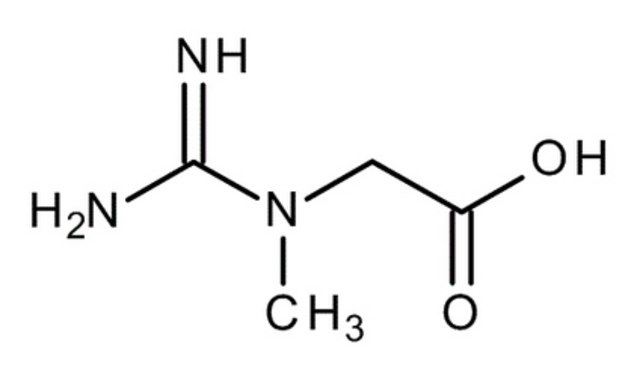Creatine monohydrate has become the supplement of choice for many athletes wanting to improve their performance. But does it live up to the hype? In this article, we take a closer look at creatine – what it is, how it works, and whether the research supports the claims.
What is it?
Creatine is a natural compound synthesized in the body and derived from the three amino acids glycine, arginine and methianine. While the body naturally produces about 1 gram of creatine per day via the liver, kidneys and pancreas, we can potentially get an additional gram coming in from the diet by consuming meat and fish (1). Almost all of our body’s creatine (about 95%) is stored in the muscle cells in the form of phosphocreatine (2).
What does it do?
The role of creatine is to help the body create energy in the form of ATP – adenosine triphosphate – the primary source of energy for all living things. In order to properly understand the role of creatine, it’s important to have a basic understanding of ATP and how it works.
ATP is a molecule made up in part by phosphate groups. Whenever a cell needs energy, it breaks the phosphate bond from ATP, turning ATP into ADP (adenosine diphosphate).
In order to regenerate energy once the phosphate bond is broken off, ATP itself must be regenerated, and there are several ways the body can do that. But specifically for quick regeneration, phosphate must be available in the muscle cells.
This is where creatine comes in: by consuming adequate creatine, we increase our stores of phosphocreatine in the muscle cells, allowing for rapid regeneration of ATP, the result of which is greater energy capacity in a short amount of time.
What does this mean, practically speaking? It means that you could potentially perform short bursts of exercise at a higher capacity: for example, more muscle contractions (think bicep curls), faster sprints or more powerful jumps.
The research supports this. A meta analysis by Rawson Eric S. and Volek Jeff S. showed that the average increase in muscle strength following creatine supplementation with resistance training was 8% greater than the average increase in muscle strength following placebo ingestion (20% vs. 12%). Similarly, the average increase in weightlifting performance following creatine supplementation plus resistance training was 14% greater than the average weightlifting performance following placebo ingestion (26% vs. 12%) (3). These are significant differences that long term, translates into increased lean tissue gains and fat loss (4).
The benefits don’t end there. Research has also shown that creatine supplementation may enhance post-exercise recovery (by virtue of it being anti-catabolic), injury prevention, thermoregulation, rehabilitation, concussion and/or spinal cord neuroprotection, and more (5).
Why supplement?
If your body naturally synthesizes a gram a day of creatine, and an additional gram is consumed from an omnivorous diet, then why supplement? Because even in a diet containing 1-2 grams per day of creatine, muscle creatine stores are only about 60-80% saturated (6), and it’s after creatine loading that performance of high intensity and/or repetitive exercise is generally increased (7).
Could you just eat more meat or fish to increase your creatine stores? Perhaps. However given that there is a certain amount of creatine degradation that happens in the cooking process, it would be impossible to know with certainty how much. Additionally, eating copious amounts of meat to increase creatine stores is not feasible for most, nor is it cost-effective. Which is why all research on creatine has been done using supplementation – and virtually all with creatine monohydrate. Not only is creatine monohydrate effective, it’s also very affordable, and for all you vegetarians out there, it’s 100% plant-based.
Safety and Side Effects
Creatine is THE most researched supplement on the planet. There have been over 1000 studies conducted on the use and the effects of creatine, with literally billions of servings of creatine ingested. Not one has shown harmful effects at the minimum dosage (8).
While there have been anecdotal reports of GI tract irritation and bloating, they’ve been generally attributed to taking too much. Research suggests taking an amount of 0.1g of creatine per kg of body weight (9), not only for efficacy, but to avoid the uncomfortable side effects.
One side effect that can’t be avoided however, is water retention. Creatine is an osmotically active substance, therefore water retention is a natural side effect and should be expected (10). The retention typically dissipates after the first few weeks, but keep in mind that water retention when taking creatine is actually seen as a very good sign – it means you are a strong responder to creatine, and you’ll stand to reap more benefits than someone who doesn’t experience any water retention.
The bottom line
You can absolutely believe the hype around creatine monohydrate. With over 1000 studies behind it, not only are there real gains to be made by coupling creatine with resistance training, but it is also safe, cost effective, and because it’s a substance made naturally by the body and found in food, it’s not banned by any sport organization. Creatine monohydrate has our 100% seal of approval at Tulum Strength Club.
Sources:
- https://www.ncbi.nlm.nih.gov/pmc/articles/PMC3407788/
- https://www.ncbi.nlm.nih.gov/pmc/articles/PMC3407788/
- https://journals.lww.com/nsca-jscr/abstract/2003/11000/effects_of_creatine_supplementation_and_resistance.31.aspx
- https://www.researchgate.net/publication/13754611_Effects_of_creatine_supplementation_on_body_composition_strength_and_sprint_performance
- https://jissn.biomedcentral.com/articles/10.1186/s12970-017-0173-z?fbclid=IwAR20AlG5-zH1xIxjxiyVBqwwrg_f4zJFAPt1t3vC6g1pjHLcottlnezCD7I
- https://jissn.biomedcentral.com/articles/10.1186/s12970-017-0173-z?fbclid=IwAR20AlG5-zH1xIxjxiyVBqwwrg_f4zJFAPt1t3vC6g1pjHLcottlnezCD7I
- https://jissn.biomedcentral.com/articles/10.1186/s12970-017-0173-z#Fig4
- https://www.ncbi.nlm.nih.gov/pubmed/10999421
- (https://www.ncbi.nlm.nih.gov/pmc/articles/PMC3407788/)
- https://europepmc.org/abstract/med/14636103
Other references
https://www.ncbi.nlm.nih.gov/pubmed/21399917

